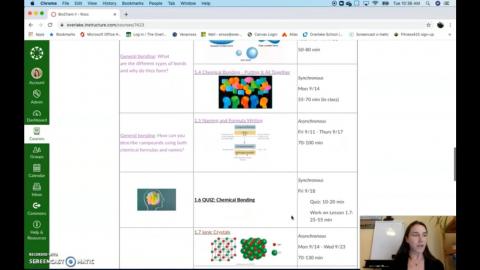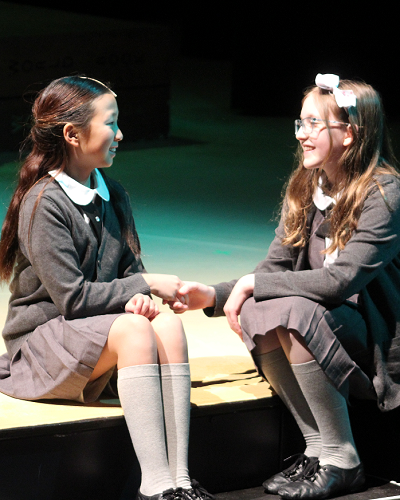From the Classroom - Emma Ross

This week we are continuing our From the Classroom series and taking a closer look at Science Faculty, Emma Ross and how she has modified the design of her Canvas courses.
A constant theme of intentionality runs though Ross’ work which has focused on simplifying the design of her Canvas courses during online learning. “I really wanted to reduce the amount of cognitive load on students,” said Ross. “They are working hard, staying positive, and showing an incredible level of resilience to the external stresses of 2020 and the challenges of online learning.”
During some professional development courses this summer, Ross was challenged to consider how to design her Canvas course in such a way that it empowers a student to interact meaningfully with the class and track their own progress.
To simplify the information, Ross laid out her lessons in an easy-to-read table with lots of white space and graphics that correspond to the lesson for easy navigation. She also notes whether a lesson is synchronous or asynchronous and includes a time estimate. The time estimate helps students track their own progress and if a lesson is taking them longer than anticipated she encourages students to reach out to her so accommodations can be made. Once a student clicks into a lesson she makes sure that everything they need for that lesson is on that one page to avoid confusing navigation. Ross created a screencast to share with her peers detailing how she designed her class layout.
The need for asynchronous classwork is especially important this year as screen time increases. Ross has made approximately half of her lessons asynchronous, allowing students to complete the lessons when it is convenient for them and allows them to build in screen breaks throughout their day.
During synchronous work, student collaboration is key. Ross utilizes breakout rooms and has students collaborate on a single Google doc which allows her to monitor multiple groups and provide feedback in real time, as well as see which students are interacting more with the class discussion.
As for tracking student’s progress, Ross schedules regular 5 minute individual check-ins with each student. “This gives students a less vulnerable space to ask questions and allows me to build more connection and personal relationships online,” Ross said
These check-ins are on top of regular scheduled office hours which have also been a helpful way to track student progress.
“I would say that my office hours are busier now that in past years, perhaps because it is so easy for a student to just click a link and join. Almost every day I have several students coming with specific questions, topics they want to practice, or writing samples they want feedback on. I've been so impressed with students' self-awareness and commitment to their learning,” she said.
While it may have taken some creativity and extra effort to design a class for online learning, Ross is taking the challenges of this year in stride
“Although this year has been hard on all of us, the students are absolutely what keeps me going,” said Ross.



